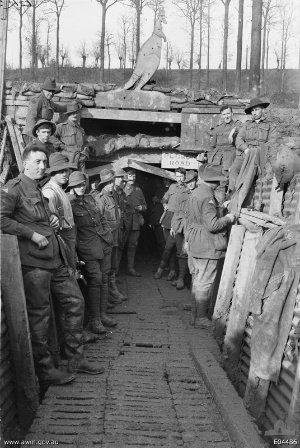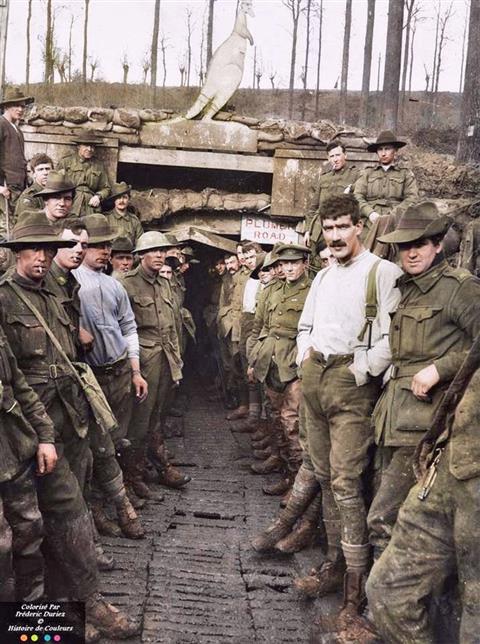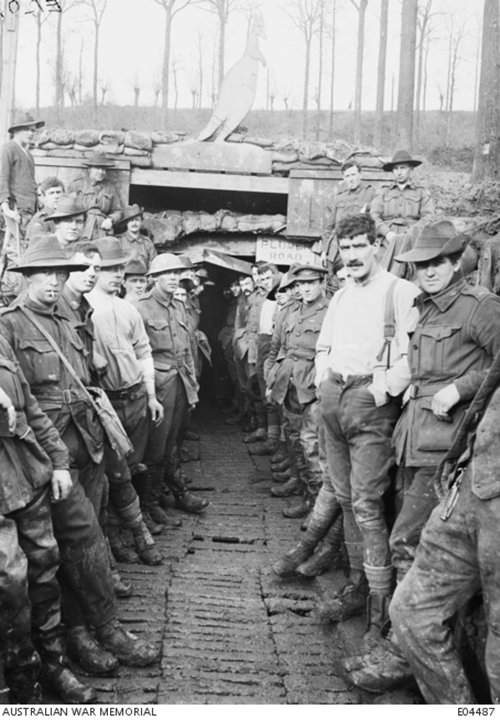




The entrance to the Catacombs, Hill 63, January 21, 1918. The Catacombs were extensive underground dugouts with accommodation for many hundred troops. The Times History of the War Illustrated c. 1919
E04486 - 22 January 1918 - Messines Sector, Belgium. 22 January 1918. A group of 7th Field Company of Australian Engineers at the entrance to the Catacombs - a system of tunnels built in Hill 63, in the Messines Sector. Note the cut out kangaroo silhouette on the top of the tunnel. No identification details were recorded for the men in this group.
E01509 - 22 January 1918 - Officers of the 6th Australian Infantry Brigade in their billets at the "Catacombs" beneath Hill 63. During the winter of 1917, from December 1917 to March 1918, the battalion used the Catacombs as a reserve position after coming out from the front line at Warneton. From here working parties were nightly sent to the front line area for construction of earthworks. Identified: Lieutenant (Lt) R. L. Keig (standing, left); Private J. Harrison (top bunk); Lt G. O. Pollington MC MM (bottom bunk, left); Lt H. Clough MC MM (bottom bunk, right). All are members of the 24th Battalion.
E04487 - 22 January 1918 - Messines Area, Belgium. An outdoors informal group portrait of unidentified members of 7th Field Company of Australian Engineers standing outside the entrance to the Catacombs in Hill 63. The Catacombs were a system of tunnels of considerable length, fitted to accommodate over 1,000 men. A wooden silhouette of a kangaroo is attached to the tunnel entrance which is signposted 'Plumer Road'.